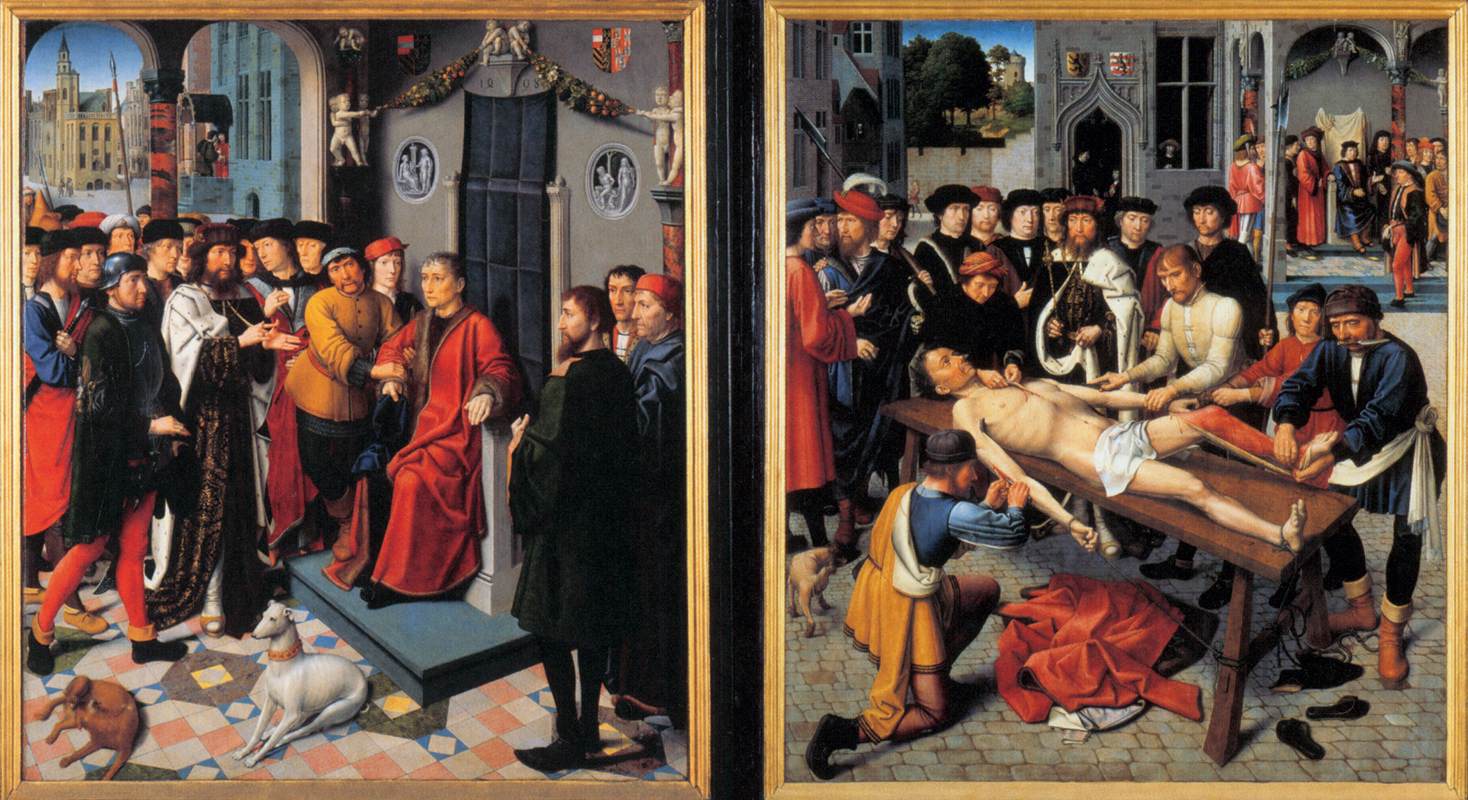This large and impressive painting by Gerard David stops nearly all visitors to the Groeningemuseum in Bruges, Belgium in their tracks. Viewers look upon the two large panels with a mixture of abhorrence and fascination while they wonder what is depicted here and why.
These two panels were commissioned by the aldermen (or, councilmen) of Bruges to be hung in the raetcamere – the room where justice was administered – of the city hall. It had become a tradition to decorate these rooms with paintings of a Last Judgment as a reference to Christ’s ultimate judgment. In 15th-century Flanders it became fashionable to also add paintings with historic subjects or legends referring to just justice. The main purpose of these exemplae iustitiae paintings was to serve as an inspiration for the judges not to be influenced by emotions or corruption during court.
The aldermen of Bruges commissioned Gerard David to depict the story of the Justice of King Cambyses – a 6th-century Persian king. Yet David painted the narrative in his familiar setting of 15th-century Flanders.
In the background of the left panel, a small scene shows judge Sisamnes accepting a bribe – a corrupt crime for which he will be arrested by the king and his entourage. David choose the moment when the executioner is lifting the judge out of his professional seat, his face white with guilt and fear of what is to come.
On the right panel, David meticulously painted the judge undergoing his severe punishment. As viewers, we become onlookers of the spectacle of public punishment and join the crowd gathered around Sisamnes, bound on a wooden table, while the executioners carefully peel off his skin careful not to hit any main arteries so as to prolong the suffering. Yet we barely notice the tiny scene in the upper half of the right panel. Here the new judge, Sisamnes’ son, is seated in the judge’s seat, now draped with Sisamnes’ stripped-off skin – a cruel reminder of the consequences of corrupt behavior.
In addition to being an exemplum iustitia reminding the judges of the consequences of judgment influenced by corruption, this painting must have also served as a professional group portrait of the Bruges aldermen – a tradition which only fully developed in later centuries.
This post was written by guest contributor, Vanessa Paumen, Research Associate, Flemish Research Center for the Arts in the Burgundian Netherlands, Groeningemuseum, Bruges
Recommended Reading


